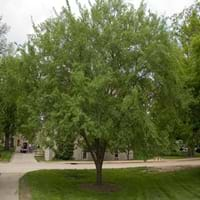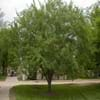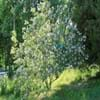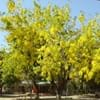Life Span
Perennial
Perennial
Origin
Eastern Asia
North America, Northeastern United States, Mid-Atlantic United States, North-Central United States, Central United States, South-Central United States, Canada
Types
Ulmus parvifolia 'Emer II', Ulmus parvifolia 'True Green'
Not Available
Habitat
Woodland Garden Canopy
Woodland Garden Canopy
USDA Hardiness Zone
5-9
3-11
Sunset Zone
3a, 3b, 4, 5, 6, 7, 8, 9, 10, 11, 12, 13, 14, 15, 16, 17, 18, 19, 20, 21, 22, 23, 24
Not Available
Habit
Upright/Erect
Upright/Erect
Minimum Width
Not Available
Flower Color
Red
Tan, Sandy Brown
Flower Color Modifier
Bicolor
Bicolor
Fruit Color
Tan, Brown
Green, Sandy Brown
Leaf Color in Spring
Green
Green
Leaf Color in Summer
Dark Green
Green, Dark Green
Leaf Color in Fall
Yellow, Red, Green
Yellow, Green
Leaf Color in Winter
Not Available
Not Available
Leaf Shape
Elliptic, toothed
oblong or obovate
Plant Season
Spring, Summer, Fall, Winter
Not Available
Sunlight
Full Sun, Partial Sun
Full Sun, Partial Sun, Partial shade
Growth Rate
Not Available
Medium
Type of Soil
Loam, Sand
Clay, Loam, Sand
The pH of Soil
Acidic, Neutral, Alkaline
Neutral, Alkaline
Soil Drainage
Well drained
Average
Bloom Time
Fall
Early Spring, Spring
Tolerances
Drought
Not Available
Where to Plant?
Ground
Ground
How to Plant?
Seedlings
Seedlings
Plant Maintenance
Medium
Medium
Watering Requirements
Average Water Needs
Average Water Needs
In Summer
Lots of watering
Lots of watering
In Spring
Moderate
Moderate
In Winter
Average Water
Average Water
Soil pH
Acidic, Neutral, Alkaline
Neutral, Alkaline
Soil Type
Loam, Sand
Clay, Loam, Sand
Soil Drainage Capacity
Well drained
Average
Sun Exposure
Full Sun, Partial Sun
Full Sun, Partial Sun, Partial shade
Pruning
Remove damaged leaves, Remove dead branches, Remove dead leaves
Remove damaged leaves, Remove dead branches, Remove dead leaves
Fertilizers
6-12-12 or 5-10-10
Any balanced general purpose fertilizer
Pests and Diseases
Canker, Leaf spot, Rots, Wilts
Blackspot mold
Plant Tolerance
Drought
Drought
Flowers
Insignificant
Insignificant
Flower Petal Number
Single
Not Available
Showy Foliage
No
Insignificant
Foliage Texture
Fine
Medium
Foliage Sheen
Glossy
Matte
Attracts
Birds
Beetles, Birds
Allergy
Moderate Allergen
Miscarriage, Rash
Aesthetic Uses
Bonsai, Showy Purposes
Not Used For Aesthetic Purpose
Beauty Benefits
Not Available
Beautiful Skin, Heals Damaged Hair, Strong, beautiful hair
Environmental Uses
Air purification
Air purification
Medicinal Uses
Antidote, Demulcent, Diuretic, Expectorant, Febrifuge, Hypnotic
Demulcent, Diuretic, Expectorant, Nutritive
Part of Plant Used
Fruits, Inner Bark, Leaves
Fruits, Inner Bark, Leaves
Other Uses
Can be grown in a shelter belt, Used as a thickener in soups
Chewed as a thirst quencher, Tea-like beverage can be brewed, Used as a thickener in soups, Used to make a twine
Used As Indoor Plant
Yes
No
Used As Outdoor Plant
Yes
Yes
Garden Design
Container, Feature Plant, Mixed Border, Shade Trees, Street Trees, Topiary / Bonsai / Espalier
Shade Trees
Botanical Name
ULMUS parvifolia
ULMUS rubra
Common Name
Chinese Elm, Lacebark Elm
Slippery Elm
In Hindi
Lacebark Elm
Slippery Elm
In German
Lacebark Elm
Rotulme
In French
Lacebark Elm
Slippery Elm
In Spanish
Lacebark Elm
olmo resbaladizo
In Greek
Lacebark Elm
Slippery Elm
In Portuguese
Lacebark Elm
Slippery Elm
In Polish
Lacebark Elm
Slippery Elm
In Latin
Lacebark Elm
Lubricus Elm
Phylum
Magnoliophyta
Magnoliophyta
Class
Magnoliopsida
Magnoliopsida
Order
Urticales
Urticales
Clade
Angiosperms, Eudicots, Rosids
Angiosperms, Eudicots, Rosids
Tribe
Ulmeae
Not Available
Subfamily
Not Available
Not Available
Number of Species
Not Available
Not Available
Season and Care of Lacebark Elm and Slippery Elm
Season and care of Lacebark Elm and Slippery Elm is important to know. While considering everything about Lacebark Elm and Slippery Elm Care, growing season is an essential factor. Lacebark Elm season is Spring, Summer, Fall and Winter and Slippery Elm season is Spring, Summer, Fall and Winter. The type of soil for Lacebark Elm is Loam, Sand and for Slippery Elm is Clay, Loam, Sand while the PH of soil for Lacebark Elm is Acidic, Neutral, Alkaline and for Slippery Elm is Neutral, Alkaline.
Lacebark Elm and Slippery Elm Physical Information
Lacebark Elm and Slippery Elm physical information is very important for comparison. Lacebark Elm height is 460.00 cm and width 300.00 cm whereas Slippery Elm height is 1,830.00 cm and width Not Available. The color specification of Lacebark Elm and Slippery Elm are as follows:
Lacebark Elm flower color: Red
Lacebark Elm leaf color: Green
Slippery Elm flower color: Tan and Sandy Brown
- Slippery Elm leaf color: Green
Care of Lacebark Elm and Slippery Elm
Care of Lacebark Elm and Slippery Elm include pruning, fertilizers, watering etc. Lacebark Elm pruning is done Remove damaged leaves, Remove dead branches and Remove dead leaves and Slippery Elm pruning is done Remove damaged leaves, Remove dead branches and Remove dead leaves. In summer Lacebark Elm needs Lots of watering and in winter, it needs Average Water. Whereas, in summer Slippery Elm needs Lots of watering and in winter, it needs Average Water.





